River birch
(Betula nigra) is a one of the best trees for year-round interest. With its multicolored papery bark that peels away from the trunk, this North American native species is a great choice for a driveway entrance, backyard habitat or woodland edge. And its ability to thrive in moist conditions makes it especially valuable where drainage is a concern.
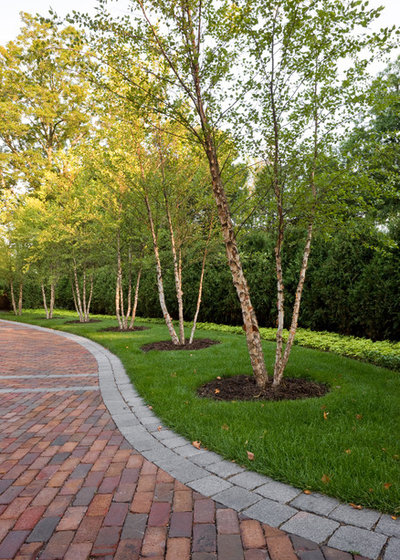
Windsor Companies
Botanical name: Betula nigraCommon names: River birch, black birch, water birch
Origin: Native to the eastern United States
USDA zones: 3 to 9 (find your zone)
Water requirement: Moderate to wet soil; adapts to stream banks (as its common name implies) and poor soils
Light requirement: Full sun to partial shade
Mature size: 40 to 70 feet tall
Benefits and tolerances: Fast-growing, disease-resistant choice for riparian buffers to curb stream erosion and improve biodiversity; leaves are a larval food source for swallowtail butterflies and other insects; seeds attract numerous birds and other wildlife
Seasonal interest: Year-round; beautiful yellow fall color
When to plant: Early spring to late fall
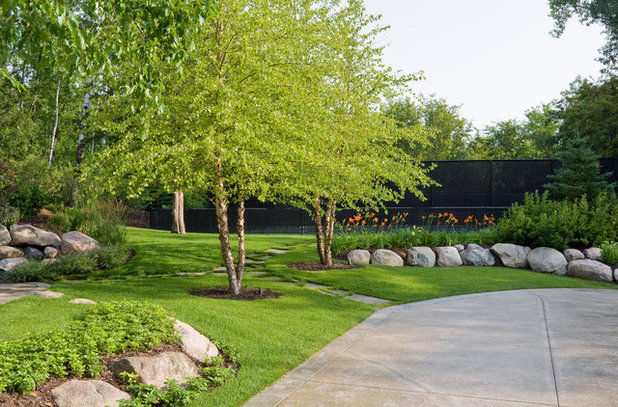 Distinguishing traits.
Distinguishing traits. With lustrous 3-inch leaves, slender catkins and textured bark, river birch creates dappled shade that's easy to plant under.
Its leaf color in fall is a medium yellow. During the winter, with a fresh blanket of snow, the bark is a welcome sight; it looks especially good against a background of cedar, pine or hemlock.
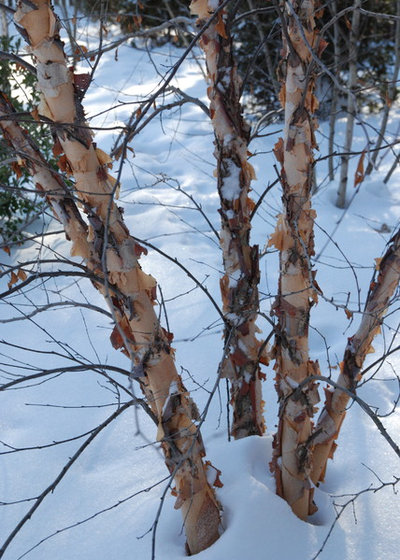
Disease-resistant 'Heritage' is a patented selection named by Earl Cully of Heritage Trees; it's an outstanding cultivar that's less prone to leaf spot than other birches and is resistant to the bronze birch borer. It's also smaller than the typical species — reaching about 40 feet tall when mature — and has a deeper saturation of bark hues.
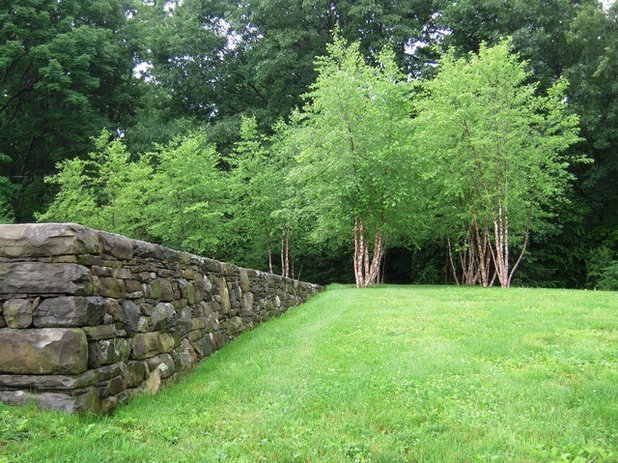
ADRIAN SMITH - Landscape Architecture
How to use It. Grow it as a specimen or in a grove to create a naturalistic buffer in full sun; combine it with native
foamflower (Tiarella cordifolia),
woodland phlox (Phlox divaricata) and
inkberry holly (Ilex glabra).
Fast growing, multistemmed trees in clump form add visual punch and are good for screening, while single-trunk specimens offer architectural formality.
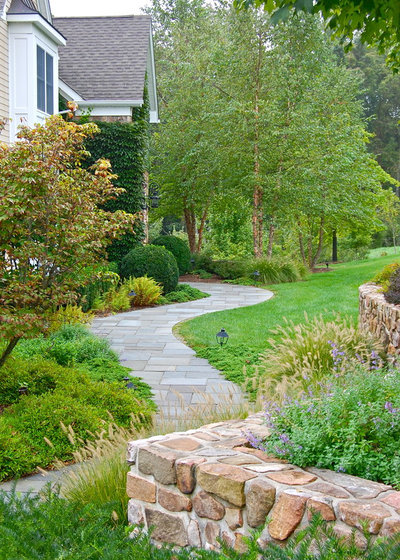
Liquidscapes
Planting notes. Trees prefer acidic soils with a pH of 6.5 or lower, so amend when necessary. These are big trees, so allow plenty of room to grow and water during dry spells, especially in warmer zones.





